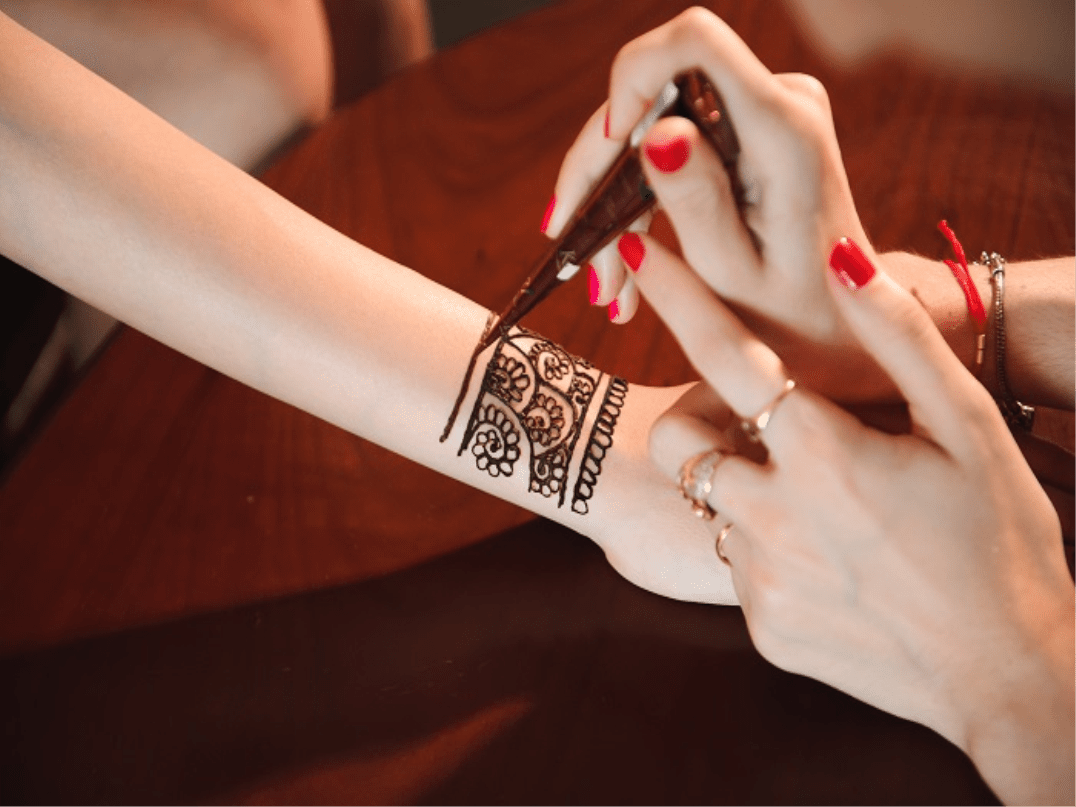Henna Night in Arab Culture and Egyptian Tradition


A great way to immerse yourself in Arab culture is by learning the language. This is the time of the year when most people are talking about the holidays. Also, some cultures see December as a lucky month to be a bride. Thus, today’s subject is going to be on the Egyptian tradition of Henna Night (ليلة الحنة / leelit ilhenna).
In Egypt, the tradition says that the night before her wedding, the bride gathers with her girlfriends. They will celebrate the Middle Eastern version of the bachelorette party – Henna Night. Some Egyptian girls consider this night as the second most important night of their lives. Indeed, some people prepare for the Henna Night as much as for the wedding itself. In fact, some Egyptian women consider Henna Night as the real wedding. To clarify, this is because women get to dance freely and generally be themselves without any men around. It is also usually the last night that the bride spends at her parent’s home.
Legend has it that Henna Night started in Ancient Egypt by the Egyptian gods of the pharaohs. The god Set was jealous of the goddess Isis’ love for her husband, the god Osiris. So, Set hatched a plan to murder Osiris, chop his body into several pieces and scatter them throughout Egypt. However, even when Set’s plan came into fruition, Isis’ love was still so strong for Osiris. She sought out and collected every part of her late husband’s body from all across the land. With each body part she collected, her hands became stained red by her husband’s blood, and ever since, red hands are seen as a symbol of a wife’s loyalty and true love for her husband. Thus, the tradition of dyeing the palm of the hands red with henna began.
While each girl waits her turn to get tattooed with beautiful creations of henna butterflies, eyes, anklets, and Nubian-inspired designs, to name a few, there are the dances with the bride, the singing of Henna Night songs, and plenty of the زغرودة / zaghroodah, the high-pitched ululation made by Arab women on such celebratory occasions.
There are also sugar cubes on a plate for the unmarried girls to eat in hope of becoming the next bride, and if that doesn’t work, there is the peculiar tradition of pinching the bride’s knee and saying “قرصة ركبتها من أجل الزواج من بعدها في نفس الأسبوع” /”qarsat rukbatuhaa min ʼajl azzawaaj min baʻdahaa fee nafs alʼusbooʻ “, or I pinch her knee in order to marry after her in the same week.” Some also follow the tradition of throwing salt on the bride to ward off the “evil eye” cast upon her by her unmarried guests.
If you liked this article and would like to learn Arabic, why not head over to our website and download the Kaleela Arabic learning app and learn to speak Arabic today? With the Kaleela Arabic learning app you can start learning Arabic on your own, at your own pace, whenever and wherever you want. It really is the best way to learn Arabic! Try it now and find out why.